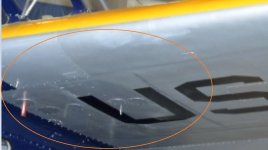gaucho_59
Charter Member
Here are the ribs!!!!!
Gaucho_59
Actually, we all seem to be in error...
Dolphin 1931 (ATC 422, 432 505, 506, 2-366, 2-479, 2-482, 2-483, 2-486, 2-487) = 8pChwMAm; two 300hp Wright J-6; span: 60'0" length: 42'6" load: 2590# v: 141/115/62 range: 450-525. $35,000. All-metal, semi-monocoque fuselage had five water-tight bays; wood-framed wing was covered with plywood; metal-clad empennage had fabric movable surfaces.
the wings were covered with plywood.... like a Mosquito!
Gaucho_59


